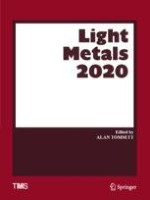2020 | OriginalPaper | Buchkapitel
A Statistical Analysis to Study the Effect of Silicon Content, Surface Roughness, Droplet Size and Elapsed Time on Wettability of Hypoeutectic Cast Aluminum–Silicon Alloys
verfasst von : Amir Kordijazi, Swaroop Kumar Behera, Omid Akbarzadeh, Marco Povolo, Pradeep Rohatgi
Erschienen in: Light Metals 2020
Aktivieren Sie unsere intelligente Suche, um passende Fachinhalte oder Patente zu finden.
Wählen Sie Textabschnitte aus um mit Künstlicher Intelligenz passenden Patente zu finden. powered by
Markieren Sie Textabschnitte, um KI-gestützt weitere passende Inhalte zu finden. powered by
